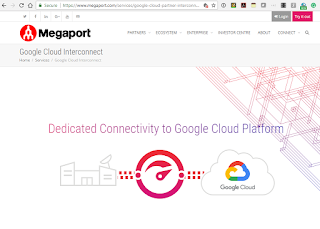Megaport has added support for Google Cloud's Partner Interconnect, a service from Google Cloud that allows customers to privately connect to Google Cloud Platform.
Google Cloud's Partner Interconnect is a new product in the Google Cloud Interconnect family. Last September, Google announced Dedicated Interconnect, which provides higher-speed and lower-cost connectivity than VPN, and has become the go-to solution to connect on-premises data centres with the cloud.
Megaport said it is now providing connectivity to the nearest Google edge Point of Presence at a variety of sub-rate interface speeds varying from 50 Mbps to 10 Gbps.
"Partner Interconnect gives Google Cloud customers even more connectivity choices for hybrid environments," said, John Veizades, Product Manager, Google Cloud. "Together with Megaport, we are making it easier for customers to extend their on-prem infrastructure to the Google Cloud Platform."
"Scalable connectivity to Google Cloud Platform ensures that cloud-enabled applications perform to meet mission-critical business requirements," said Vincent English, CEO of Megaport. "Google Cloud brings tremendous value to the Megaport Ecosystem and empowers our customers to address a wide variety of business needs. We have been working with Google Cloud since our inception and we are excited to grow and evolve our integration to ensure the next generation of business growth."
Google Cloud's Partner Interconnect is a new product in the Google Cloud Interconnect family. Last September, Google announced Dedicated Interconnect, which provides higher-speed and lower-cost connectivity than VPN, and has become the go-to solution to connect on-premises data centres with the cloud.
Megaport said it is now providing connectivity to the nearest Google edge Point of Presence at a variety of sub-rate interface speeds varying from 50 Mbps to 10 Gbps.
"Partner Interconnect gives Google Cloud customers even more connectivity choices for hybrid environments," said, John Veizades, Product Manager, Google Cloud. "Together with Megaport, we are making it easier for customers to extend their on-prem infrastructure to the Google Cloud Platform."
"Scalable connectivity to Google Cloud Platform ensures that cloud-enabled applications perform to meet mission-critical business requirements," said Vincent English, CEO of Megaport. "Google Cloud brings tremendous value to the Megaport Ecosystem and empowers our customers to address a wide variety of business needs. We have been working with Google Cloud since our inception and we are excited to grow and evolve our integration to ensure the next generation of business growth."

















